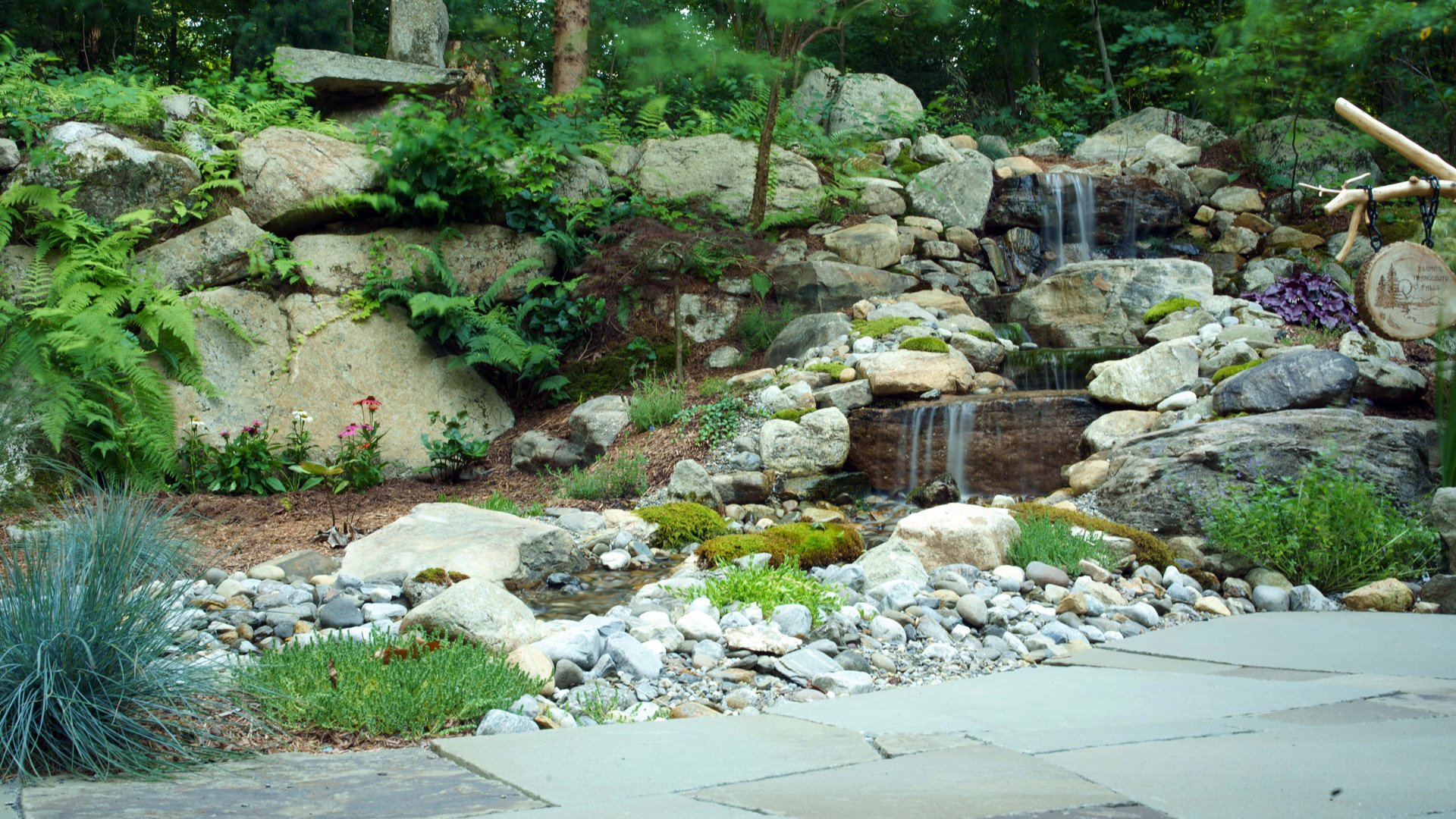What can I do with all of these rocks?
The northern New Jersey areas of Sussex County, Warren County, and Morris County have been endowed with a geological gift. These three counties consist of two areas known as the "Valley & Ridge" and the "Highlands" Physiographic Provinces. They have the largest concentration of different rocks, including Limestone, Peat, Slate, Gneiss, Quartzite, Dolomite, Magnetite, and Marble, than any county in the state.
Nature is pretty incredible. It can inspire, relax, and rejuvenate the mind, body, and soul. It's our core belief that well-planned, nature-inspired outdoor living areas bring families closer while building new memories. We help facilitate that in what we build. And rocks are an essential part of that.
Maybe you have differently sized rocks left over from construction or excavation. Perhaps your property naturally has an abundance of substantial rock formations protruding from the surrounding landscape. Either way, we often get the question, "What can I do with these rocks?"
So, what can be done with the rocks?
We have compiled a list of the most common uses we see when a property is graced with an abundance of rock.
Retaining wall – Excellent choice for more natural elevation changes, big or small or for separating areas.
Water feature – Relaxing sounds that even invite nature's creatures to stop for a visit.
Accent piece – Perfect for adding a unique focal point, with one rock or many.
Rock garden – Lots of rocks interspersed with a variety of beautiful flowers and plants to inspire the magical feeling of an alpine meadow.
Fire pit – Extend the outdoor living season with a primal source or heat and light. Don't forget the s'mores!
I chatted with our own Robert Molinet, owner and head-honcho of Sierra Landscape Management. He's no stranger to dealing with "rocky situations." His years of experience has taught him the best uses for rocks found on-site, when to use them, and importantly, when NOT to use them.
Robert says, "It may seem attractive to want to use the rocks that are on-site." But he continues explaining that he's faced with weighing the difference of not having to purchase new rocks with the potential damage to the ecosystem that could result from trying to extract the rocks.
For example, driving heavy machinery into wooded areas could damage tree roots or generally upset the natural beauty of the area. "We must be respectful of the land and be responsible for what we do to it. It's just not worth the risk of ruining what likely took hundreds or thousands of years to create just to grab some rocks," Robert said.
Sometimes, rocks were too large to move very far from the home and might even be considered "eyesores" because of their size and proximity. If possible, we'll use these rocks that are closer to the house and more accessible. They generally work well in projects like retaining or dividing walls or accent pieces. We'll then purchase other large rocks to supplement the rest of the wall or include plants and additional rocks to add visual interest.
There are rare occasions when it's just not feasible to keep everything and rocks have to be removed. Fortunately, that is a rare occasion. But when we have to remove rocks, we don't like to waste anything. There are going to be others who share your enjoyment for a natural outdoor space but are in need of a few rocks to complete their own feature. We do our best to make sure materials removed from your site are managed ethically and responsibly.
Tell us what you would like to see.
When Sierra builds outdoor living spaces for our client's families, we want to create a feeling of awe and inspire creativity. We do what is necessary to turn a backyard into an extension of nature in a responsible way. We aim to exceed customer expectations in all we do and we would love the opportunity to show you exactly what that looks like. Click on the button below to get inspired and see for yourself what we have done with other properties in the area.

